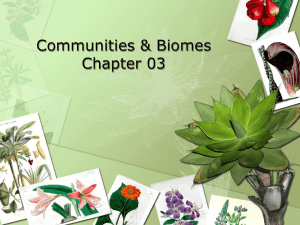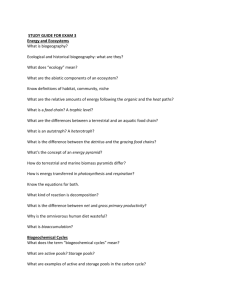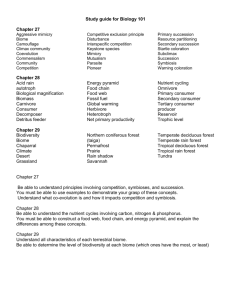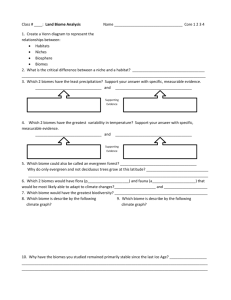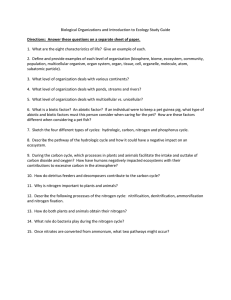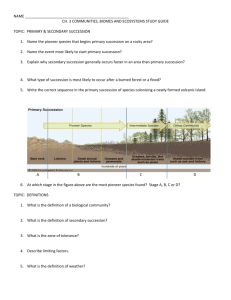Ecology II Common Assessment STUDY GUIDE
advertisement
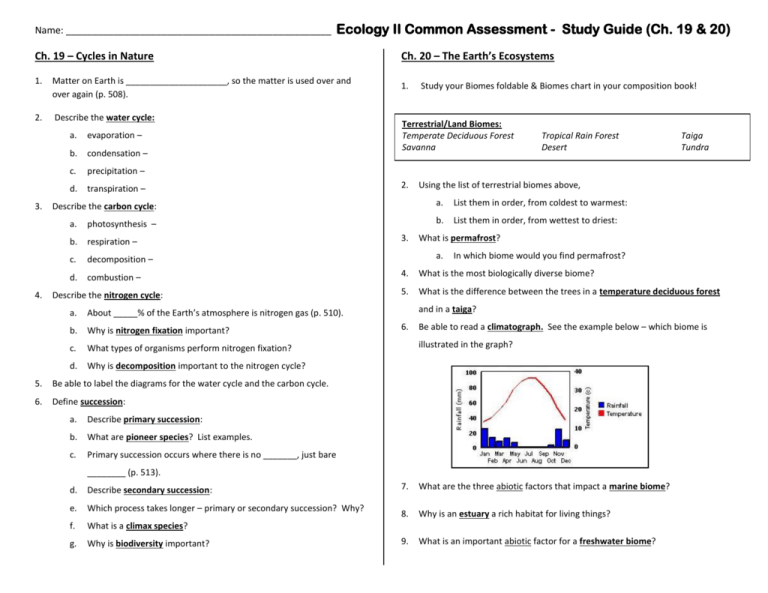
Name: __________________________________________________ Ecology II Common Assessment - Study Guide (Ch. 19 & 20) Ch. 19 – Cycles in Nature 1. Matter on Earth is _____________________, so the matter is used over and over again (p. 508). 2. Describe the water cycle: 3. 4. a. evaporation – b. condensation – c. precipitation – d. transpiration – Ch. 20 – The Earth’s Ecosystems 1. Terrestrial/Land Biomes: Temperate Deciduous Forest Savanna 2. Describe the carbon cycle: a. photosynthesis – b. respiration – c. decomposition – d. combustion – Describe the nitrogen cycle: a. About _____% of the Earth’s atmosphere is nitrogen gas (p. 510). b. Why is nitrogen fixation important? c. What types of organisms perform nitrogen fixation? d. Why is decomposition important to the nitrogen cycle? 5. Be able to label the diagrams for the water cycle and the carbon cycle. 6. Define succession: a. Describe primary succession: b. What are pioneer species? List examples. c. Primary succession occurs where there is no _______, just bare Study your Biomes foldable & Biomes chart in your composition book! 3. Tropical Rain Forest Desert Using the list of terrestrial biomes above, a. List them in order, from coldest to warmest: b. List them in order, from wettest to driest: What is permafrost? a. In which biome would you find permafrost? 4. What is the most biologically diverse biome? 5. What is the difference between the trees in a temperature deciduous forest and in a taiga? 6. Be able to read a climatograph. See the example below – which biome is illustrated in the graph? ________ (p. 513). d. Describe secondary succession: e. Which process takes longer – primary or secondary succession? Why? f. What is a climax species? g. Why is biodiversity important? Taiga Tundra 7. What are the three abiotic factors that impact a marine biome? 8. Why is an estuary a rich habitat for living things? 9. What is an important abiotic factor for a freshwater biome?



